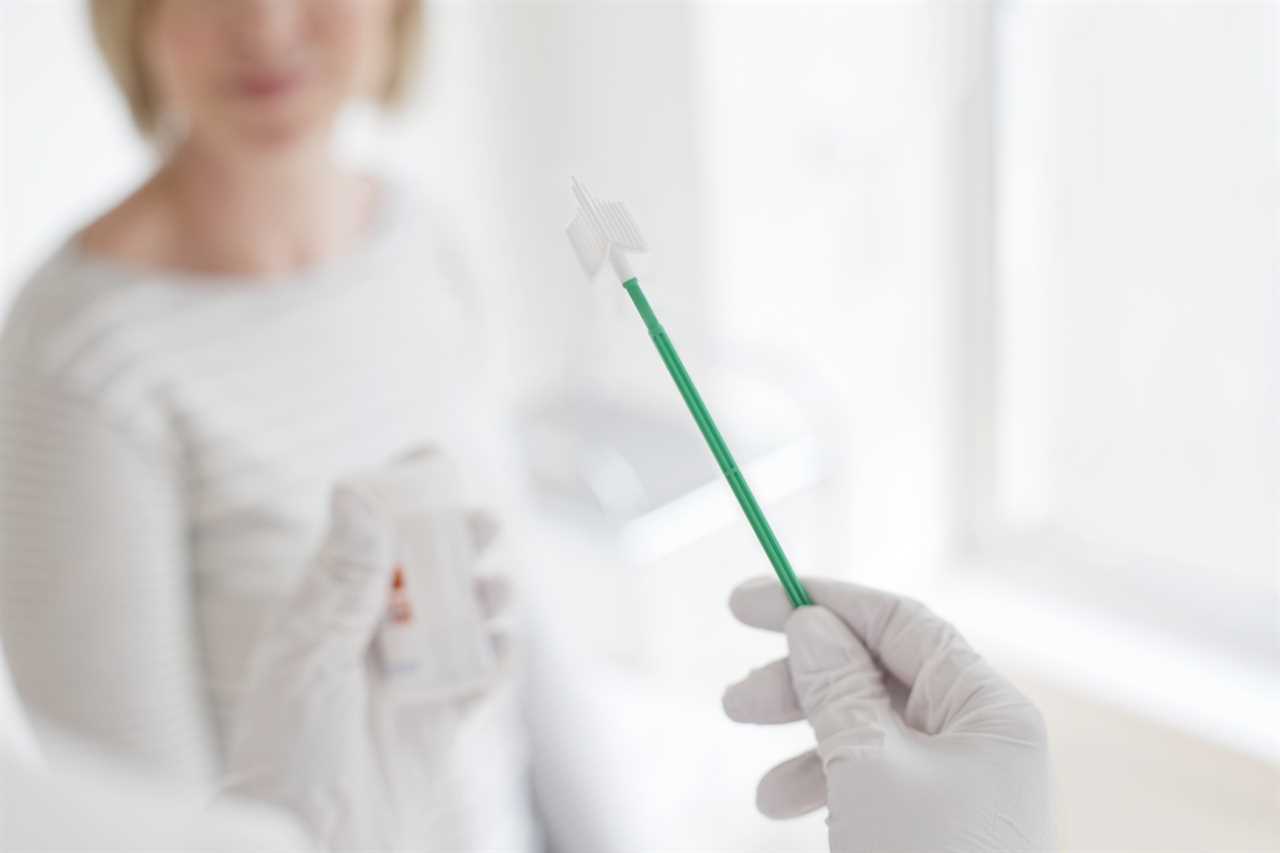A GROUNDBREAKING new test could detect if you’re at risk of four cancers during a routine smear.
Called the “women’s cancer risk identification”, it can predict the possibility of developing ovarian, breast, womb and cervical cancers.

It would catch up to 30 per cent more women at high risk of these killer diseases than current tests.
Using samples taking during a smear test would also mean minimal discomfort and appointments needed to keep tabs on multiple body parts.
Together, these four cancers account for more than 50 per cent of all cancers in women in Europe.
More than 250,000 European women and people with gynae organs are diagnosed with these diseases each year, and almost 45,000 die from them.
The earlier a cancer is detected, the more chance of beating it – so if the risk factor is known early on, this would be hugely helpful in treatment.
People found to have a high risk of any of these four cancers could then be offered regular check ups or risk-reducing surgery – potentially preventing thousands from getting cancer a year.
The research, funded by The Eve Appeal and the European Research Council, published today in Nature Communications, looks at specific markers on our DNA.
It’s called “DNA methylation”, and can indicate what the future of cells looks like.
For example, during life the methylation can change in response to lifestyle and environment – with this then influencing how our body reacts to disease, such as cancer.
The changes can be present in cells years before cancer develops, but can be used to predict the risk in the future due to the markers.
The researchers used cervical screening samples as a surrogate tissue to measure DNA marks of cervical cells, and found that they can be specifically related to whether someone has breast or ovarian cancer.
Liz O’Riordan, a breast cancer surgeon who has had breast cancer, said: “This research is incredibly exciting.
“At the moment there is no screening test for breast cancer in women under the age of 50. If this test can help pick up women with a high risk of developing breast, ovarian, cervical and uterine cancer at younger age, it could be a game-changer”
The research shows that the WID-Test outperforms a currently used method for determining breast cancer risk by combining information on genetic variants.
The current method identified 47.5 per cent of women with breast cancer in the highest risk group, the WID-Test had an almost 30 per cent (29.1) improvement on this and identified 76.6 per cent of these women.
‘INCREDIBLY EXCITING’
Similarly, for ovarian cancer the current test identified 35.1 per cent of women in the highest risk group, while the WID-Test identified 61.7 per cent.
Prof Martin Widschwendter, Department of Women’s Cancer, UCL, UK, said: “Our studies have taken a completely novel approach and evaluate an individual’s risk for more than one cancer by assessing several different epigenetic footprints in a single cervical screening sample.
“The WID-test will look for the footprints on a woman’s DNA as she goes through life, recording the track she is taking and whether she is heading towards cancer.
“We look forward to a future in which cancer screening is driven by better molecular tests that give women the option to take preventive measures at an early stage and journey away from cancer.”
Athena Lamnisos, CEO, The Eve Appeal, said: “The ambition of this research programme is to stop cancer before it starts.
“This could create a step change in screening for key cancers – not detecting them early but preventing them from developing.
“Creating a new screening tool for the four most prevalent cancers that affect women and people with gynae organs – particularly the ones which are currently most difficult to detect at an early stage – from a single test could be revolutionary.”






